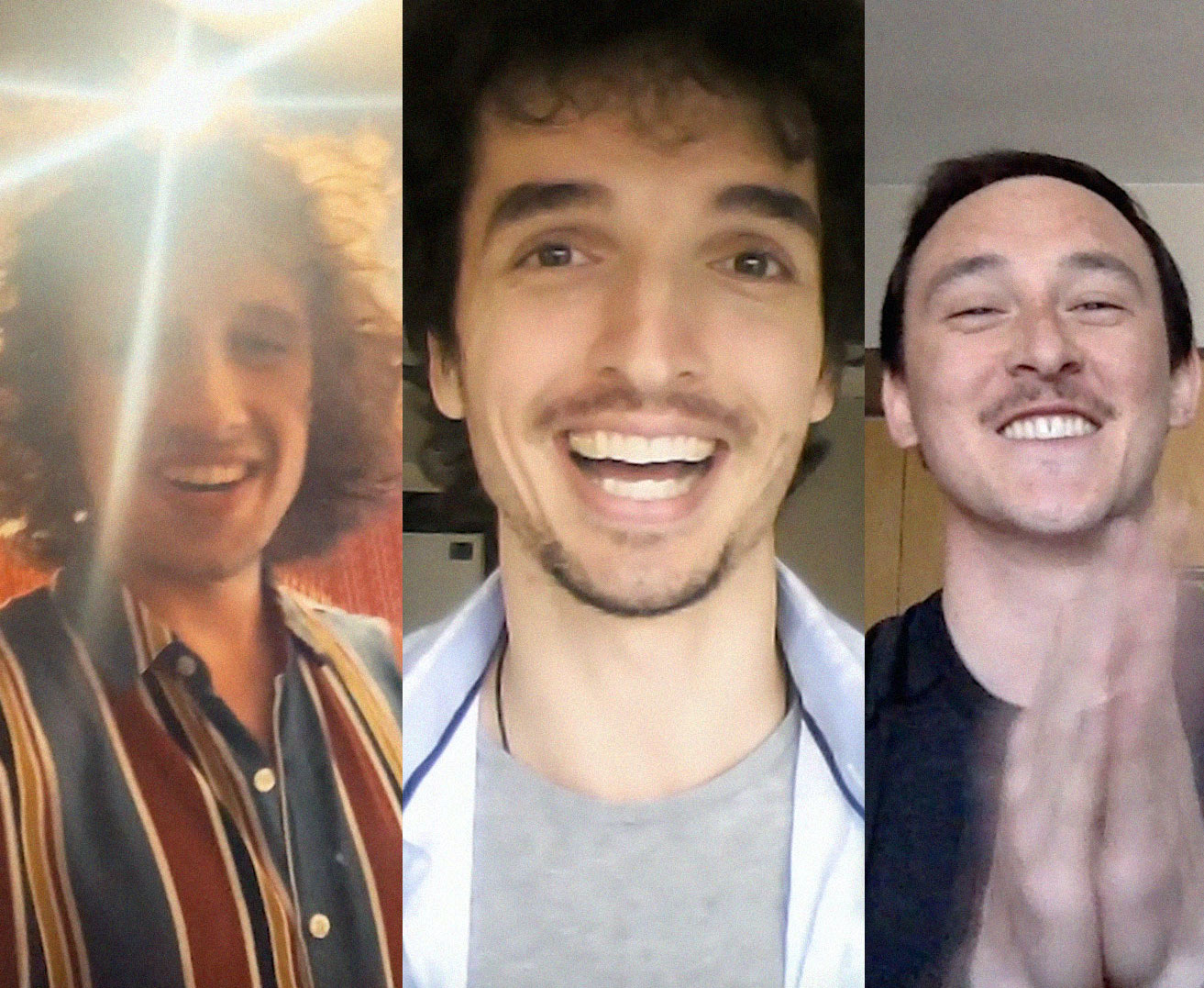“There was definitely something there” he says as he recounts the early days of his journey with testicular cancer. “There were two masses. One was like a frozen pea. The other was like that thing in the movie Alien. You know? The one that attaches to people’s faces. That’s what the second one was like”.
Justin is one of the estimated 251,000 men living with testicular cancer in the US alone. Like most men with the disease, Justin was young when he was first diagnosed: an otherwise well 25-year old living with his fiancé in Frederiksberg, Virginia.
“Telling my Mom was hard- I’m the first born. It’s rare that a son is telling their mother they have cancer.”

As the most common cancer among young men, testicular cancer strikes a group of people who rarely consider themselves at risk of illness, or who know where to go for information when they need it.
“There didn’t seem to be a lot out there. You go on Google, and think you’re going to die tomorrow.”
As Justin shares his story you begin to see the emotional and physical challenges facing these young men: the uncertainty in the hours and days after finding a lump, the anxiety around having and recovering from surgery, and the fatigue and nausea that accompany the weeks of chemotherapy that may follow.
“I knew the smart thing was to have the surgery. But I wasn’t emotionally ready to handle that” he explains. “You don’t have time to process things. It’s just bam, bam, bam.”
The gradual then sudden nature of Justin’s testicular cancer experience mirrors that of other young men, including Brendon Moohin: a 33-year-old diesel fitter in Mackay- a town halfway between Brisbane and Cairns on Australia’s east coast.
“I went to the emergency room on Sunday night. And by Wednesday I’d had surgery”.
Brendon’s journey from diagnosis to treatment was like most things in his life: fast. “I love anything going fast” he explains, “motor cross, sailing, racing push bikes”.

So when Brendon first noticed something wasn’t right, he didn’t stop: he just pushed on.
“At the time, I was doing a fair bit of running. I had a little bit of pain in my testicles, but I thought it was just part of getting fit.”
“It wasn’t until the pain became unbearable- when I was sick, I was cold, when the pain and shock started to set in – that I went to the doctor. And that’s when it was game on.”
After weeks of making excuses and ignoring the pain, Brendon was diagnosed with an aggressive form of testicular cancer- requiring immediate surgery and two months of chemotherapy.
“I was given 3 weeks to recover from surgery” Brendon explains, before starting an intense course of chemotherapy. “Getting through the chemo was the hardest part” he recalls: “you get told a lot of information when you go into oncology, but you don’t realise the seriousness of it”.
“They walk along their counter and give you one of every pamphlet: contact this group, and they’ll give you this; if you’ve got cancer and need help, call this group. But you don’t feel like you want or need to talk to them.”
What both Brendon and Justin were craving was information and advice about the disease they were facing, and from someone who had lived it.
“I never had anyone with previous experience to talk to. And I guess that’s the key point: having someone who is able to tell you what you’re going to be up against and the reasons why it’s so important to prepare yourself for all the little steps” Brendon explains.
Brendon and Justin’s stories aren’t just sobering accounts of what a young man goes through when faced with testicular cancer. They are also gold mines of information that when explored, can unearth important nuggets to help inform what support these men need, when, and from whom.
Talking to men with testicular cancer is a critical part of what Sam Gledhill and his team at the Movember Foundation do almost every day. This approach puts ‘users’ at the centre of the design process, and is an intentional and strategic way to design products that meet user needs and preferences.
As part of a recent project targeting testicular cancer survivors, Sam and his team spent hours talking to men and learning from them about where and how the Foundation could have a real impact.
“We had assumed that there was a white noise problem” explains Sam, “which is where people hear the word cancer and then don’t hear anything else.”
“As part of the design process and talking to men, we learned that yes, that period is pretty tough, but it’s also the time when they have access to health professionals and family.”
“Where it gets really difficult is after surgery: when they’re at home on the couch. Everyone has gone back to work, and they are left alone with crappy day time television and their own dark thoughts about their mortality.”
It’s in this period, between initial treatment and what’s to come, that the Movember Foundation saw an opportunity to make a difference for men with testicular cancer.
“Talking to men helped us realise that the real gap we could fill was in providing informal support: giving men a product they could use to connect with someone with a lived experience of testicular cancer. Not as a counsellor, but as a mate with a voice they can trust”.
The soon to be launched product – named TrueNTH Testicular Cancer – is a suite of tools, including a website, optimised for mobile devices, with information tailored to the needs of men at different stages of the disease. The tool will also connect men going through testicular cancer with others who have gone through a similar journey. In some markets, TrueNTH Testicular Cancer will allow men to directly link to nurses specialised in testicular cancer- allowing them to ask questions about their symptoms, side effects of treatment, and reactions to different medications.

A Sam explains, “had we gone with a traditional product development process, we would have built something to solve a problem that wasn’t actually the real problem that these men were experiencing.”
“By investing a small amount of money, we critically asked our users what they wanted us to do and we built a product that’s directly linked to their pain points. And we’ve gone back time and again to make sure what we’re doing is still the right thing to do”.
For Rob Hamilton, a urologist at the Princess Margaret Cancer Centre in Toronto, TrueNTH Testicular Cancer is an important new offering for men.
“In the eyes of the rest of the world, testicular cancer is regarded as a cured illness. Yet, for those of us that live in it, we know that there's so much work that needs to be done. TrueNTH Testicular Cancer will be a useful product. And we’re thankful to have a champion in Movember to take this on and actually make a real dent in testis cancer care.”
It might not solve every problem, but it’s hoped TrueNTH Testicular Cancer will be an invaluable tool to help men find their way through what is likely to be one of the biggest transitions of their young lives.
To access the TrueNTH Testicular Cancer resources, visit: https://truenth-tc.org
To find out more about Justin Birckbichler’s journey with testicular cancer, you can visit his blog http://www.aballsysenseoftumor.com/ (note: A Ballsy Sense of Tumor is written, prepared and managed by Justin Birckbichler in his personal capacity. The opinions expressed in A Ballsy Sense of Tumor are the author's own and do not necessarily reflect the views of the Movember Foundation).
.jpg)



.com_Carousel.jpg)



(1).png)


